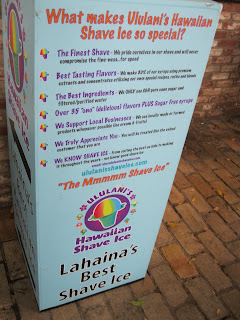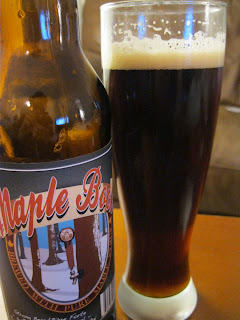Look at that. Is that your typical piece of beef? Yes, my friends, get ready to bow to the Wagyu cow -and yes, those white streaks absolutely are the marbling of fat! Isn't that the most absolutely intensely, beautiful, wonderful piece of meat you'll ever see? Well, probably not. In Japan, they rate beef marbling on a scale of 1 to 12. According to the butcher, he gave me an 8 or 9. To put this into perspective, the top cuts here in Canadian groceries are 5-6. Only this week, they found a supplier in Australia who get them this incredible cut. the price is surprisingly not too bad at $40/pound, or $88/kg. For those of you who don't shop, ground beef might go for about $4-6/pound, a nice steak (Filet Mignon, New York etc.) might be in the $15-$20 range . So in comparison, $40/lb is not bad. An 8 oz portion of this is therefore $20, which is affordable for many households on a special occasions basis. And keep in mind that in Japan, Kobe (Wagyu beef, but from the capital of Kobe province) beef often runs for $300 per pound.
I just seared it (naked - no seasonings) on a thick bottomed pan, although the cast iron would be more ideal. Nonetheless, ended up with a great sear on both sides, and a wonderfully rare inside (almost blue, actually, unintentionally). Waited for 5 minutes, then thinly sliced. Right before serving, I threw on some sea salt.
The smell is fatty, almost resembling - wait for it - foie gras. That was the biggest, and most pleasant, surprise. The texture is soft, and the little nuggets of salt explode in your mouth when they hit. The taste is exceptionally meaty, and the caramelizing on the edges give it that final crunch. And you have to wonder why life is that good to you. What have you done in a past life to deserve this, because certainly there's nothing in this life that made you deserving.
On Wagyu Beef:
Wagyu beef refers to cuts of beef from the black Tajima-ushi breed of Wagyū cattle. If raised according to strict tradition in Hyōgo Prefecture, Japan, it is called Kobe beef. If it is cross-bred with Angus cattle, it is called "Kobe-style" beef. What is pictured above was "Kobe Style".
Farms in America and Britain have attempted to replicate the Kobe traditions, providing their Wagyū herds with beer. U.S meat producers claim that any differences between their less expensive "Kobe-style" beef and true Kobe beef are largely cosmetic. The cattle are fed American and/or British grass and grain, which is different from the more expensive Japanese feed. Cuts of American "Kobe-style" beef tend to have darker meat and a bolder flavor.
The meat is generally considered to be a delicacy, renowned for its flavour, tenderness, and fatty, well-marbled texture. Wagyu beef can be prepared as steak, sukiyaki, shabu shabu, sashimi, teppanyaki and more. The beef is also eaten raw by people in Japan as in the form of sushi.
The Wagyu cattle that produce this highly-prized meat were introduced into Japan in the second century as work animals, used in rice cultivation. As beef consumption became more prominent in society, farmers began hiring workers to massage the animals' backsides to improve meat quality. The mountainous topography of the islands of Japan resulted in small regions of isolated breeding, yielding herds that developed and maintained qualities in their meat that differ significantly from all other breeds of cattle. Herd isolation and distinctive feeding techniques, which resulted from the limited land availability, have led to distinguishing features that make the meat both superior in marbling and in the ratios of unsaturated versus saturated fats.
Japan has tracked genetic lines of Wagyu cattle for more than 30 years and have developed a grading system that's precise where eating quality is concerned; that system includes evaluation for meat color, fat color, marbling scores from 1-12, and meat texture. In the United States, all fed beef is graded by the USDA into 3 categories... Select, Choice, and Prime. Prime is ~5-6 on a the Japanese marbling scale.















































